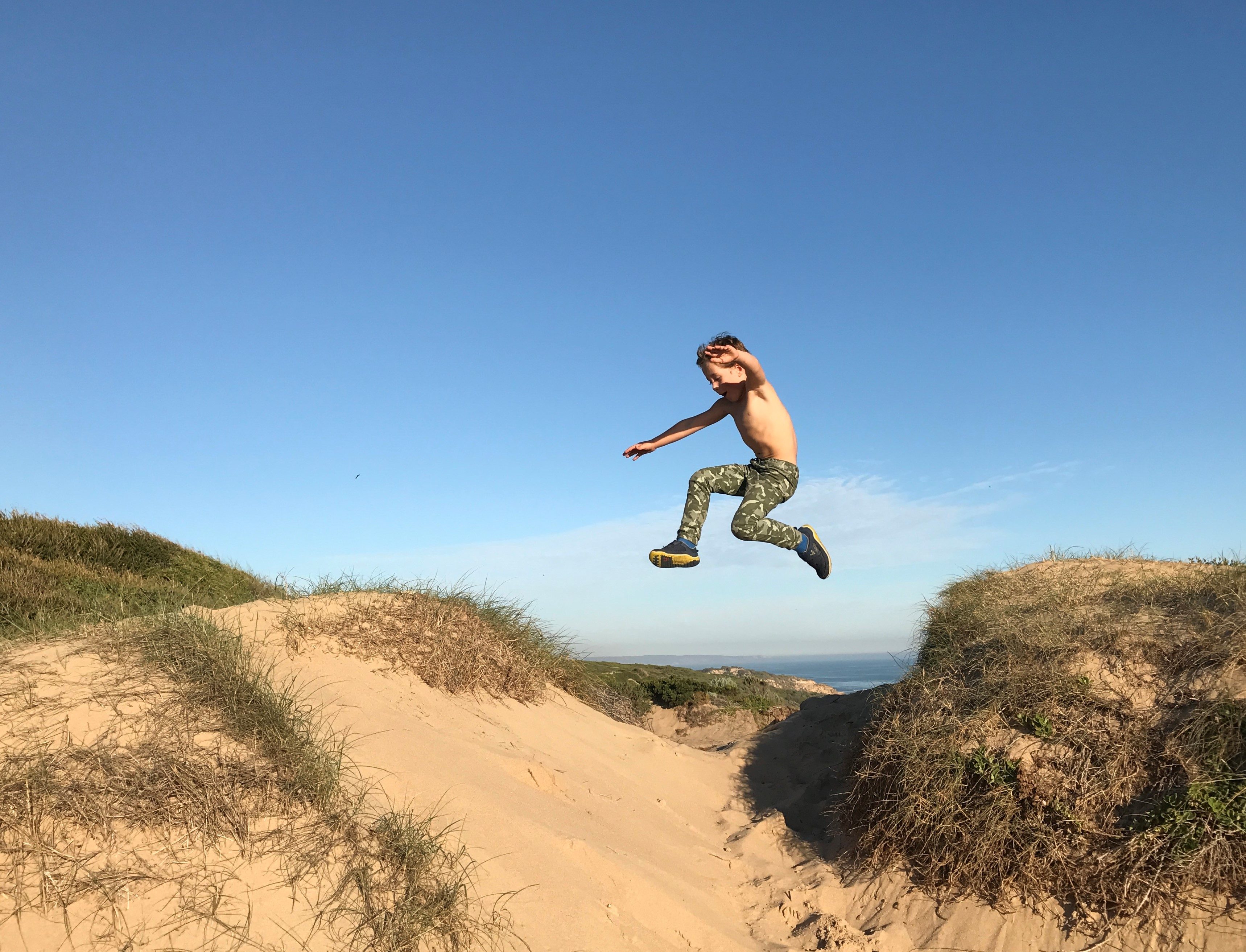How nature can nurture our sons

Aussie kids are spending less and less time outdoors engaging in free, unstructured play – at most 40 minutes per day, which is less than 5 hours each week.
There are many reasons for this, including parental anxiety and highly scheduled lifestyles (school, AusKick, swimming lessons, dance class, play dates, rinse and repeat).
There’s also the move towards apartment and unit living, which is leading to the demise of the back yard. And many of the backyards are more ‘manicured’ than ‘natural’.
And then there’s the fact that kids are spending more and more time in front of screens – on average, a staggering 52 hours per week.
So how is this decline in free, unstructured outdoor play impacting our kids?
Physical health
Without time outside, kids are finding it more challenging to develop fine and gross motor skills. Their vestibular systems, which include the parts of the inner ear and brain that help control balance and eye movement, are also less able to develop. And children who spend less time outside experience more problems with sensory processing and are more at risk of childhood obesity.
Mental and emotional wellbeing
According to 2010 study by the University of Essex, even a short amount of time spent in nature can produce rapid improvements in mental wellbeing and self-esteem, with the greatest benefits experienced by the young.
Specific emotional benefits associated with spending time in nature include reduced aggression and increased happiness. “Children will be smarter, better able to get along with others, healthier and happier when they have regular opportunities for free and unstructured play in the out-of-doors,” concluded a 2005 study published by the American Medical Association.
Climbing a tree, is about learning how to take responsibility for yourself, and how – crucially – to measure risk for yourself.
Stephen Moss, naturalist and authorCognitive development
Scandinavian research has shown that learning outdoors in natural spaces encourages children’s active exploration and experimentation, and promotes cognitive development.
Free and unstructured play in the outdoors is also said to boost problem-solving skills, focus and self-discipline.
“Nature is a tool,” says naturalist, broadcaster and author Stephen Moss, “to get children to experience not just the wider world, but themselves.” So climbing a tree, he says, is about “learning how to take responsibility for yourself, and how – crucially – to measure risk for yourself. Falling out of a tree is a very good lesson in risk and reward.”
The future of the planet
Finally, let us not forget that our kids are the future custodians of the planet. If their only experience of the natural world is through a screen, how can we expect them to truly care about our world?
What can parents do to help kids get back to nature?
- Transform your backyard
Climbable trees are great, but not every backyard has one. Can you include a sensory area, such as a mud or digging patch, sandpit or water area? It might get messy but this environment allows your son to use his imagination, and initiate and direct his own learning.
Allow your backyard to encourage parent–child interaction outdoors. If you have a veggie patch, get your son involved in the planting, care and harvesting. If you have space, cubby building is a wonderful memory-making experience to share with your son. Try to incorporate natural elements, such as logs and rocks, rather than plastic.
- Actively encourage risk-taking
There is no doubt that our increasingly ‘risk-averse’ society is having a negative impact on our kids, and particularly on boys. Boys naturally seek out uncertainty and disequilibrium in their play. Being in control of being ‘out of control’ allows boys to discover their limits and ‘have a go’. In other words, to begin to take calculated risks.
So, whether you’re in your own backyard, in the forest or at the beach, let your son climb trees, build his own obstacle course, and test and challenge himself in his own way and own time. Don’t let too many restrictions get in the way of him engaging with his environment. By stepping back, you’re doing him a big favour – risk-taking is a natural coping mechanism, which helps with problem-solving, reducing anxiety and promoting resilience.
- Treat nature as an adventure to inspire curiosity
Young children are increasingly showing signs of anxiety about, and fear of, the natural environment of the outdoors (weather, bugs and creatures). Give your child the gift of enthusiasm by getting out into nature and treating it as an adventure rather than something you have to tick off a parenting ‘to-do list’. Make your nature time fun and spontaneous. Encourage him to ask lots of questions. Your excitement is contagious, and when you show awe in nature, your son will follow suit.
References
Fjortoft, I. (2001) ‘The natural environment as a playground for children: the impact of outdoor play activities in pre-primary school children’, Early Childhood Education Journal, 29 (2): 111–117.
Henley, J. (2010) ‘Why our children need to get outside and engage with nature’, The Guardian. Available at https://www.theguardian.com/lifeandstyle/2010/aug/16/childre-nature-outside-play-health [Verified 13 September 2017].
Nixon, D., Aldwinckle, M. (2003) Exploring child development from three to six years (Thomson Learning: Southbank, Vic.).
O’Brien, L., Murray, R. (2006) A marvellous opportunity for children to learn: a participatory evaluation of Forest School in England and Wales (Forest Research: Farnham, Surrey).
Sobel, D. (2008) Childhood and nature: design principles for educators (Stenhouse: Portland, ME).
Brought to you by Brighton Grammar School
Rebecca Thornton is a teaching assistant at the Peter Toms Early Learning Centre at Brighton Grammar School. This article is about WellbeingSubscribe to Understanding Boys. It’s free!
Got boys? Sign up for tips and advice you'll actually use.
